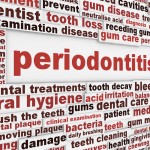
While periodontal disease is common, aggressive periodontitis (AgP), a rapidly progressing form is less common tending to occur in a younger subset of patients. Although caling and root planing (SRP) is the most common treatment a number of adjunctive treatments are in use including antimicrobial photodynamic therapy (aPDT). The mechanism of action of aPDT involves the excitation of photosensitizer dye molecules by laser light or visible light of specific wavelength producing reactive oxygen species that cause bacterial cell death. The aim of this review was to assess the efficacy of aPDT in the treatment of AgP.
Methods
Searches were conducted in the MEDLINE/PubMed, EMBASE, Scopus, ISI Web of knowledge, and Google-Scholar databases. This was supplemented by hand searches of the Journal of Clinical Periodontology, Journal of Periodontology, Clinical Oral Investigation, Journal of Dental Research, Lasers in Medical Science, Journal of Photochemistry and Photobiology, Photodiagnosis and Photodynamic Therapy and Journal of Research and Science.
Prospective clinical trials published in English evaluating efficacy of aPDT in treating AgP that reported one or more clinical periodontal parameters were considered. Three reviewers selected the studies with two reviewers assessing study quality using the Jadad scale.
Results
7 studies were included – 5 with a split-mouth design.
3 studies were considered to be of high quality (Jadad scores 4 or 5) the remainder were moderate (Jadad score 3).
Diode lasers with wavelengths ranging between 660nm and 690nm were used.
All 5 studies reporting clinical periodontal parameters, showed that aPDT was effective in the treatment of AgPat follow up
Conclusions
The authors concluded:
Based on the level of evidence available, aPDT is effective as an adjunct to SRP for the management of aggressive periodontitis however further randomized clinical trials with well defined control groups are needed in this regard.
Comments
While a broad database search was conducted to identify studies and 7 small studies were identified. A majority of these were split-mouth studies and there is some debate regarding the possibility of cross over effects. Two of the studies reported microbiological parameters but not clinical parameters and the maximum follow up period for any of the studies was 12 weeks. There was considerable heterogeneity in relation to the wavelengths of the lasers used the irradiation times and the number of applications for photosensitizers. The Jadad score was used to assess study quality and these types of scoring systems are no longer recommended.
A 2013 review by Sgolastra et al (Dental Elf-26th Apr 2013) looked at the effectiveness of aPDT in the treatment of chronic periodontitis. That review included 14 studies involving a total of 360 patients and suggested small short-term benefits which were not stable over time.
Links
Vohra F, Akram Z, Safi SH, Devi Vaithilingam R, Ghanem A, Sergis K, Javed F. Role of antimicrobial photodynamic therapy in the treatment of aggressive periodontitis: a systematic review. Photodiagnosis Photodyn Ther. 2015 Jul 13. pii: S1572-1000(15)30001-6. doi: 10.1016/j.pdpdt.2015.06.010. [Epub ahead of print] Review. PubMed PMID: 26184762.
Dental Elf – 20th Jul 2015 – Aggressive periodontitis: systemic antibiotics may improve outcome

Aggressive periodontitis: is photodynamic therapy effective? http://t.co/hcNbH3txh2
Photodynamic therapy may be of benefit in aggressive periodontitis http://t.co/hcNbH3txh2
Aggressive periodontitis: photodynamic therapy may benefit http://t.co/hcNbH3txh2
Photodynamic therapy may help in aggressive periodontitis http://t.co/hcNbH3txh2
Don’t miss – Aggressive periodontitis: is photodynamic therapy effective? http://t.co/hcNbH3txh2